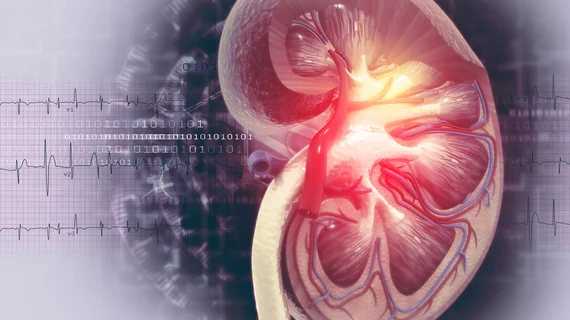Quality effort yields significant drop in kidney stone CT radiation exposure
Kidney stones are a common and reoccurring concern, with accompanying CT potentially subjecting young patients to unnecessary and harmful radiation. But a new quality initiative is finding success reducing excess exposure.
Imaging experts designed the Dose Optimization for Stone Evaluation intervention to aid in this effort. The multifaceted quality approach includes education and personalized consultation to help radiologists adopt reduced-radiation dose CT protocols, researchers detailed Tuesday in JACR.
Testing the change in a randomized investigation produced promising results. Imaging institutions who adopted the intervention saw a roughly 16% drop in the average dose-length product (used to measure CT tube radiation exposure).
“The Dose Optimization for Stone Evaluation intervention resulted in a significant (P < .05) and persistent reduction in mean radiation doses for engaged facilities performing [kidney stone] CTs,” lead author Christopher Moore, MD, with Yale University’s School of Medicine, and co-authors concluded.
To reach their conclusions, Moore et al. targeted more than 300 eligible facilities contributing to the American College of Radiology’s dose index registry in 2015. Roughly half who met their criteria were randomly tapped to receive the intervention, while the other half served as controls. Scientists recorded the radiation dosing that first year as a baseline, and compared it to results in 2017, 2018 and 2019.
All told, the analysis included more than 422,000 kidney stone CTs from 192 facilities. There was a “substantial” drop of 110 mGy ∙ cm in mean dose-length product facilities participating in the Dose Optimization for Stone Evaluation intervention compared to the control group. And the proportion of reduced-dose CTs increased in participating facilities for all three years following the intervention.
You can read more about their initiative and its results in the Journal of the American College of Radiology here.

